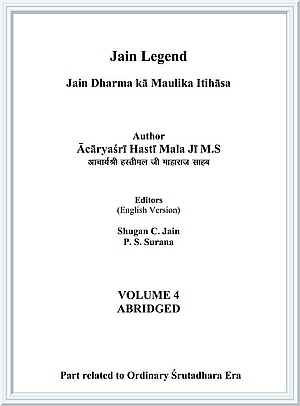| 60th Pontiff Ācārya Lālajī Swāmī | 61st Pontiff Ācārya Jňānaŗişi | |
| Birth | V.N.1900 | V.N.1927 |
| Initiation into monkhood | V.N.1938 | V.N.1943 |
| Became ācārya | V.N.1957 | V.N.1987 |
| Heavenly Abode | V.N.1987 | V.N.2007 |
| Household life duration | 38 years | 16 years |
| Ordinary monk tenure | 19 years | 44 years |
| Period of ācārya status | 30 years | 20 years |
| Complete monkhood | 49 years | 64 years |
| Total life spain | 87 years | 80 years |
42nd epochal - ācārya Sumiṇa Mitra
| 62nd Pontiff Ācārya Nānagajī Swāmī | 63rd Pontiff Ācārya Rūpajī Swāmī | |
| Birth | V.N.1944 | V.N.1972 |
| Initiation into monkhood | V.N.1970 | V.N.2004 |
| Attained ācārya status | V.N.2007 | V.N.2032 |
| Heavenly Abode | V.N.2032 | V.N.2052 |
| Household life duration | 26 years | 32 years |
| Ordinary monk tenure | 37 years | 28 years |
| Period of ācārya status | 25 years | 20 years |
| Complete monkhood | 62 years | 48 years |
| Total life spain | 88 years | 80 years |
Deeply hurt by the degenerated state of religious congregation, the great intellect and indomitable valiant monk Varddhamāna Sūri first set in motion the reformation movement to uproot the perverted rituals, laxity in the conduct of monks, etc. In the succeeding period of Varddhamāna Sūri, the reformation movement was continued by great ācāryas, but they could bring a partial reformation only. Because of these haphazard reforms, the religious congregation had gone through lot of upheavals and many gacchas had mushroomed, disintegrating the religious congregation into many small units without unity and solidarity. The difference in beliefs, doctrines and austerities of different gacchas led to petty jealousies, hatred, unhealthy competitions etc. among each other, ultimately leaving the once mighty and reputed religious congregation in a feeble and dilapidated form.
The leaders and pioneers of Temple dweller tradition openly proclaimed ten rules for Temple dweller monks, completely discarding the scriptures promulgated by the omniscient. Those regulations, the off springs of their brain were tailor-made just to achieve their ends. Though all the 10 rules were against the scriptures, particularly the ninth one is an open attack or revolt against the scriptures. It is as follows:
"A monk has to observe all these activities and has to preach and propagate the methods of these rituals and see that the people observe and follow them as they conduce to salvation. If such activities, explanations, rites and rituals and their methods are not mentioned in the scriptures, then just discard the scriptures. If scriptures prohibit such activities, ignore scriptural rules and continue to perform such activities and encourage others to do so, because the tenets of the Lord are of manifold predications. No such categorical instructions are found in Jain scriptures claiming that some works should be carried out alone in seclusion while some works should not be accomplished in solitude. Scriptures are abundant with such examples wherein the works which should not be carried out are being performed and the activities which should be performed had not been performed at all."
With this rule the Temple dwellers got an open license to perform lax austerities, lead an ascetic life, propagate beliefs, frame methods of rites and rituals which are totally against the scriptures, and moreover follow and encourage others to follow the perverted methods to popularise their congregation.
Exactly in the same way, the first reformer Ācārya Varddhamāna Sūri told firmly in clear words that we consider nothing else other than those scriptures compiled by Gaṇadharas and Knowers of 14 prior canons as authentic. But in course of time, not only the ascetic traditions founded by Varddhamāna Sūri, but the so-called Suvihita tradition also started considering the 5 aṃgas, i.e. scriptures and even Niryuktis, Bhāṣyas, Cūrṇis and Ṭīkās as authentic. Thus, the royal gate of the Pure Spiritual congregation was opened wide forever for the royal entry of false doctrines, pseudo rituals and perverted methods.
 Acharya Hasti Mala
Acharya Hasti Mala
